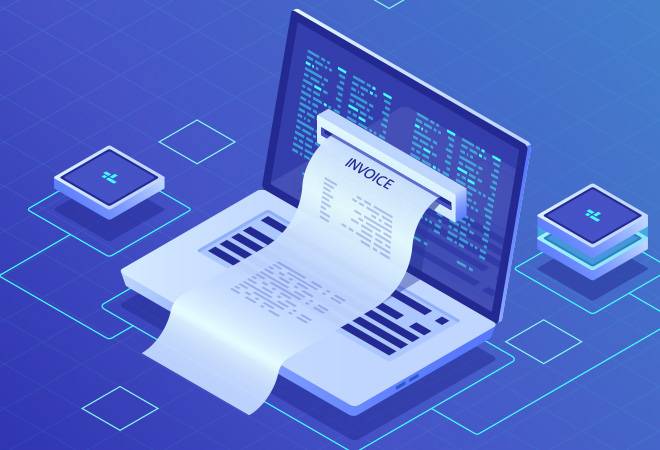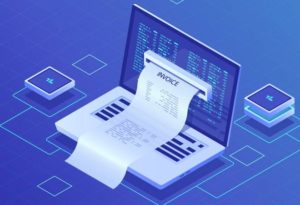Why Your Business Should Be Using Electronic Invoicing
The Blue dot Team
The Blue dot Team

 What is e-invoicing?
What is e-invoicing?
E-invoicing is short for electronic invoicing—a form of electronic billing. It’s sometimes also referred to as electronic invoice processing. Basically, it speeds up the whole invoice cycle.
E-invoicing is used between customers (buyers) and suppliers to share documents related to their business transactions worldwide. It’s also used in transactions for business to business, government to government, business to government and vice versa.
E-invoices ensure that the terms of trading agreements are being met. Rather than printing an invoice on paper and mailing it or sending it by fax , digital copies are used.
Using e-invoicing is a faster, cheaper and easier way to send, receive and track invoices compared to their printed counterparts. And it’s much more secure as explained below.
Is e-invoicing mandatory?
While not mandatory everywhere, it’s moving in that direction. It’s mandatory in Mexico and will likely become a requirement in much of the business world in the coming years.
In Europe, the world’s most active region regarding e-invoicing, a series of legislation has been created to promote the increase of e-invoicing across the European Union. As more companies move online and employ a global workforce, the use of e-invoicing will continue to grow.
The benefits of using e-invoices
E-invoicing solutions are easy to implement and simple to use. Traditional invoices rely on paper copies. That might be fine when sending them across town or even across the country. But in today’s fast-paced marketplace, paper invoices are no longer practical or desired.
Not to mention the chance that an invoice may get lost or delayed as mail service slows even more. Businesses that send e-invoices online can transmit an invoice instantly. The recipient can send it back just as quickly, turning an invoice around in a matter of minutes rather than weeks. The process is efficient, secure and provides a digital copy for tracking.
E-invoices also save money. They cost less than the paper, envelopes and postage required to send them out the door. While an e-invoice solution isn’t free, businesses will spend much less than they would on printed versions while enjoying the benefits of increased efficiency.
Structured vs. unstructured electronic invoices
Structured electronic invoices include machine-processable formats such as XML (Extensible Markup Language), EDIFACT, etc., which allow for real system-to-system communication with savings potential for both the sender and the recipient. They use special protocols, which allow for acknowledgement of the receipt of a message.
Unstructured electronic invoices include formats such as PDF, Word, PNG, etc., and are sent by email or downloaded using a web form. Unlike structured electronic invoices, they don’t include special protocols for acknowledgement of the receipt of a message.
Staying compliant with e-invoicing laws
E-invoicing provides a streamlined approach to compliance and a more cost-effective alternative to paper invoices. Typically, the only cost of an e-invoice is the price for your e-invoice solution. This may be in a subscription, a by-case cost, or some other way of funding.
By following e-invoicing processes, businesses find it easier to stay compliant with invoicing laws. Careful adherence to the latest legislative changes can help businesses avoid fines. It can also mitigate any consequences associated with making mistakes when sending invoices.
And with cyber protection safeguards in place—including data encryption—e-invoicing is a secure option. Printed invoices can get lost, stolen or damaged en route while an e-invoice is kept online, making it easier to send, track, store and make backup copies if necessary.
Environmentally friendly e-solution
Ultimately, we all want a healthy planet with clean, renewable resources. E-invoicing supports this goal by reducing the number of trees harvested for paper. Electronic invoices lessen the environmental impact that leads to deforestation and greenhouse gas emissions.
Moving from printed invoices to e-invoices is not only a smart choice for businesses, but it will also help foster a healthier and more sustainable environment for future generations.
Tax authorities are embracing automation and technology to accelerate the collection of data and revenues, allowing them to generate income faster as well as be more efficient, creating more bandwidth for more analysis and audits. Businesses need to automate manual processes through tax compliance technology in order to keep pace with the requirements of tax authorities and ensure their compliance processes are digitalized, efficient and remove as much room for error as possible.
For general information on e-invoicing and how it works, check out this webinar on E-invoicing and Peppol Made Simple.
* Mandatory Fields